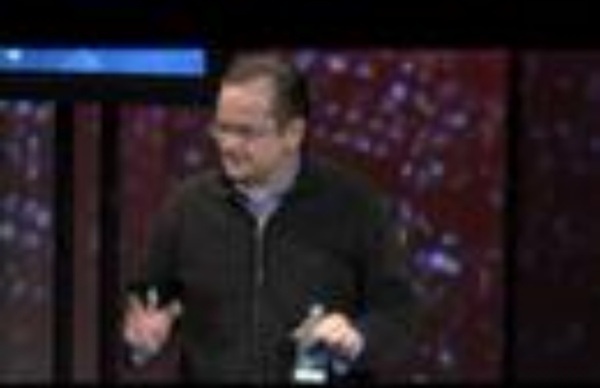



http://www.youtube.com/watch?v=7Q25-S7jzgs
Related: Intellectual property/ethics: Creative Commons, Copyright, Fair Use, Public Domain, CC0Even Weird Al Gets Permission – American University Intellectual Property Brief If you’re on the Intellectual Property Brief website, odds are that you know what fair use is. The doctrine of fair use is one of the most important features of United States copyright law, and the need for its preservation cannot be overstated. The American University Center for Social Media has some excellent definitions of fair use: “Fair use is the right, in some circumstances, to quote copyrighted material without asking permission or paying for it.
The Golden Ratio, The Secret Success Code of Man & The Universe There is a code that lies both within and without. This secret yet open code points the way to your purpose, your happiness and your greatness… it goes by the name of The Golden Ratio/Divine Code. Matthew Cross I was 13 when I first learned of the Golden Ratio, known variously throughout the ages as the Divine Proportion/Ratio and Golden Mean/Section. My co-author Robert Friedman, M.D. and I have added the term Divine Code to this lexicon, our inclusive term integrating the primary facets of this Universal principle for growth, unity, success and enlightenment: • The Golden Ratio 1:1.618… Past Perfect The past perfect is a verb tense which is used to show that an action took place once or many times before another point in the past. Read on for detailed descriptions, examples, and present perfect exercises. Past Perfect Forms The past perfect is formed using had + past participle. Questions are indicated by inverting the subject and had. Negatives are made with not.
Intermediate Web Literacy I: Intro to CSS Do the activity on your own to become familiar with fair use, open licensing, copyright, search, reverse-image search, and embedding images in a webpage. Follow this link to the Thimble project for this activity. Click on the green "Remix" button in the upper right-hand corner of the window to go into the project's code. Click on the "Tutorial" pane next to the "Preview" pane in the upper right-hand corner of the coding window. Follow the steps in the tutorial to complete the activity. You may also need to check back here and complete some of the steps in this lesson plan to successfully finish the Thimble project.
Matthew Cross and The Golden Ratio/Divine Code There is a code that lies both within and without. This secret yet open code points the way to your purpose, your happiness and your greatness… it goes by the name of The Golden Ratio/Divine Code. Matthew Cross I was 13 when I first learned of the Golden Ratio, known variously throughout the ages as the Divine Proportion/Ratio and Golden Mean/Section. My co-author Robert Friedman, M.D. and I have added the term Divine Code to this lexicon, our inclusive term integrating the primary facets of this Universal principle for growth, unity, success and enlightenment:
Overview of Phi, the Golden Ratio / Divine Proportion and Fibonacci numbers (or Phi for “Neo-Phi-tes”) What is Phi? Phi ( Φ = 1.618033988749895… ), most often pronounced fi like “fly,” is simply an irrational number like pi ( p = 3.14159265358979… ), but one with many unusual mathematical properties. Unlike pi, which is a transcendental number, phi is the solution to a quadratic equation. Phi is the basis for the Golden Ratio, Section or Mean Present Perfect The present perfect is a verb tense which is used to show that an action has taken place once or many times before now. The present perfect is most frequently used to talk about experiences or changes that have taken place, but there are other less common uses as well. Read on for detailed descriptions, examples, and present perfect exercises. Present Perfect Forms The present perfect is formed using has/have + past participle.
Fair use and transformativeness: It may shake your world I am no longer sure that anything I learned, or anything I regularly share relating to fair use, is either helpful or relevant. As a gatekeeper, I’ve been far too conservative. As I watched the information and communication landscapes shift over the past few years, I secretly viewed fair use as a doctrine that guided what we couldn’t do. Fear and guilt seemed regularly in the way of innovative teaching and creative expression. I was reluctant to use, or bless the use, of copyrighted materials–movies, television, advertising, popular music, etc.
Stock Markets and the Fibonacci Series, and inflection points based on Phi Human expectations occur in a ratio that approaches Phi Changes in stock prices largely reflect human opinions, valuations and expectations. A study by mathematical psychologist Vladimir Lefebvredemonstrated that humans exhibit positive and negative evaluations of the opinions they hold in a ratio that approaches phi, with 61.8% positive and 38.2% negative. Phi and Fibonacci numbers are used to predict stocks 4FwCNWJmDl Etherpad lite allows you to edit documents collaboratively in real-time, much like a live multi-player online editor, allowing you to write articles, proposals, press releases and the like, together with your friends, your fellow students or your colleagues, working on the same document at the same time. It even supports rich text editing! Additionally, Etherpad lite provides access to all data through a well-documented HTTP API and supports import/export to many major data exchange formats. The built-in plugin system makes extending the core functionality a breeze, regardless of whether you're adding support for inserting images or videos or allowing users to collaborate on tables. Try the live demo !